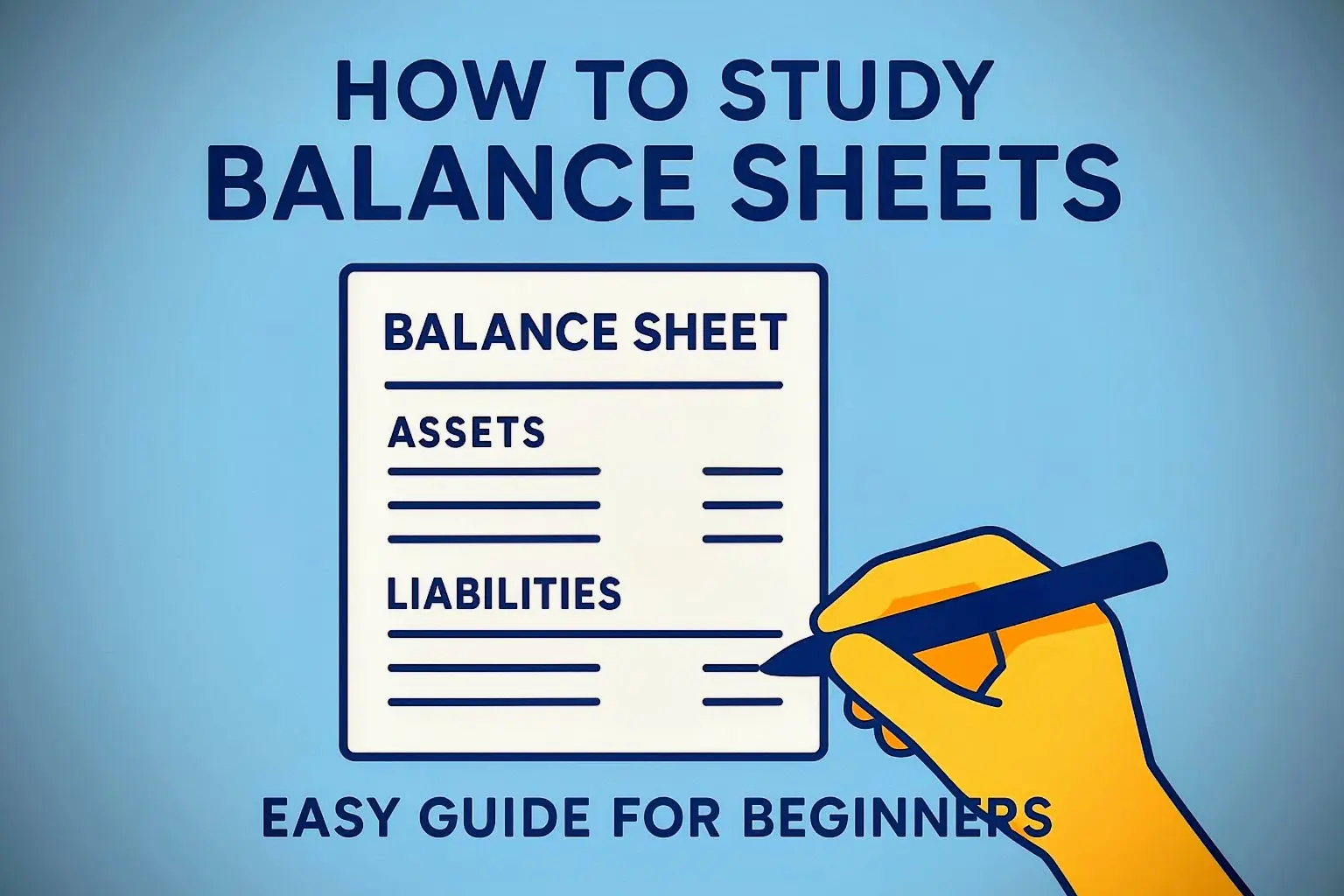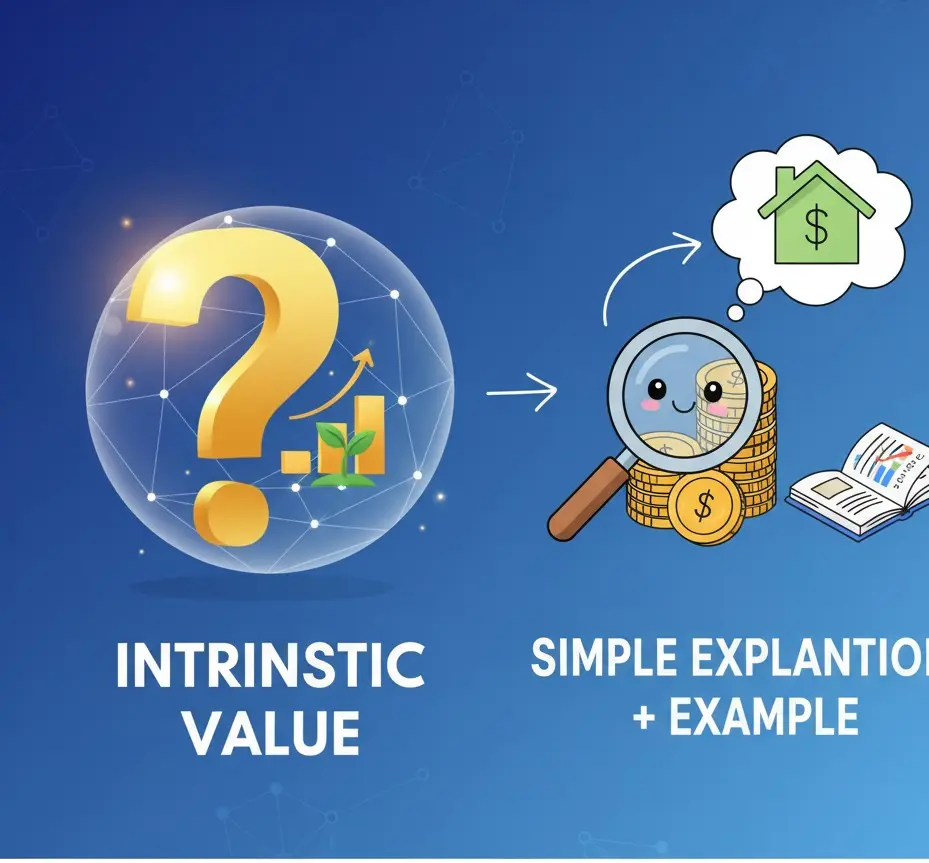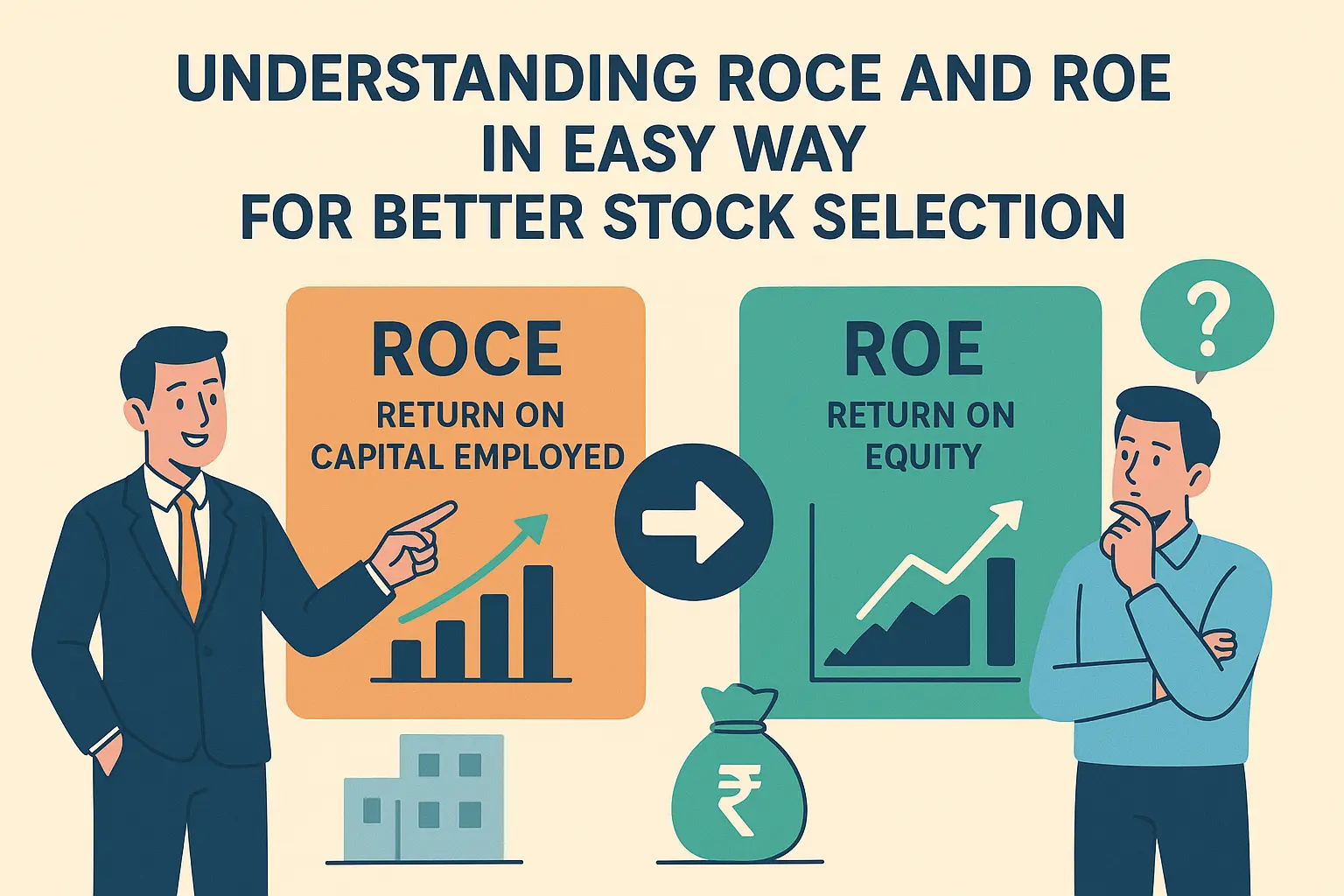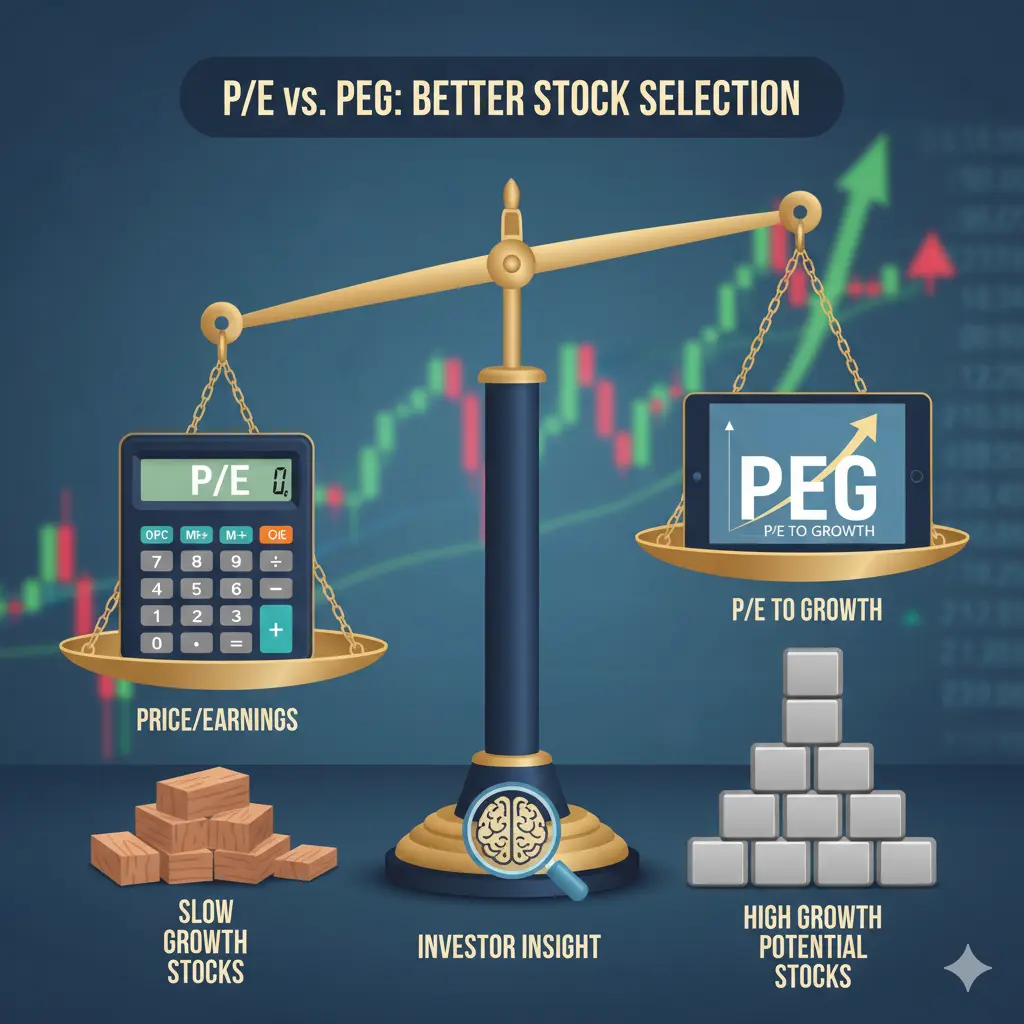

What Exactly Is Intrinsic Value?
Imagine you're at a car dealership. A car is priced at ₹10 lakhs, but you know that same model typically sells for ₹8 lakhs in other cities. The ₹8 lakhs price represents the car's intrinsic value - what it's actually worth. The ₹10 lakhs asking price is the market price - what people are currently paying for it.
In stock investing, intrinsic value is the true, inherent worth of a company based on its fundamental business performance, assets, and future cash flow potential - regardless of its current stock market price.
Intrinsic Value = What a business is ACTUALLY worth
Market Price = What people are CURRENTLY PAYING for it
Warren Buffett, the legendary investor, famously said: "Price is what you pay, value is what you get." Intrinsic value is that fundamental "value" he's referring to.
Why Intrinsic Value Matters for Stock Investors
Helps you determine if a stock is overvalued or undervalued compared to its true worth.
Removes emotion from investing by focusing on business fundamentals rather than market sentiment.
Helps you find quality companies trading below their intrinsic value - the famous "margin of safety."
Encourages thinking like a business owner rather than a stock speculator.
Real-world Analogy: Think of intrinsic value like buying a house. You wouldn't pay ₹1 crore for a house just because your neighbor did. You'd check similar properties, location, amenities, and future potential to determine its true worth. That's intrinsic value analysis!
The Core Concept: Intrinsic Value vs Market Price
| Aspect | Intrinsic Value | Market Price |
|---|---|---|
| Definition | True business worth based on fundamentals | Current trading price in stock market |
| Determined By | Business performance, assets, future cash flows | Supply and demand, investor sentiment, news |
| Stability | Changes slowly with business fundamentals | Can change dramatically in short term |
| Calculation | Requires fundamental analysis | Simply the last traded price |
| Investment Signal | Buy when market price < intrinsic value | Often influenced by fear and greed |
💡 Warren Buffett's Wisdom
"It's far better to buy a wonderful company at a fair price than a fair company at a wonderful price." - This philosophy is rooted in intrinsic value analysis. Buffett looks for great businesses and calculates what they're truly worth, then waits for the market to offer them at attractive prices.
Introduction to DCF: The Gold Standard for Intrinsic Value
The most widely used method for calculating intrinsic value is the Discounted Cash Flow (DCF) method. Here's the simple logic behind it:
Intrinsic Value = Present Value of All Future Cash Flows
Think of it this way: A business is worth all the cash it will generate in the future, but we need to account for the fact that money today is worth more than the same amount in the future (this is called the time value of money).
DCF in Simple Steps:
Understanding the Time Value of Money
This is the most important concept in DCF analysis. Would you prefer ₹100 today or ₹100 one year from now? Most people would choose ₹100 today because:
- You can invest it and earn returns
- You can use it immediately
- There's no risk of not receiving it
Simple Example: If you can earn 10% interest per year, then:
₹100 today = ₹110 in one year (₹100 + 10% interest)
Therefore, ₹110 in one year is worth ₹100 today
We say the present value of ₹110 one year from now is ₹100 (at 10% discount rate)
Step-by-Step DCF Calculation: Practical Example
Let's calculate the intrinsic value of "Stable Growth Ltd." using a simplified DCF approach:
Company Background:
- Current Free Cash Flow: ₹100 crores per year
- Expected Growth: 8% per year for next 5 years
- Long-term Growth: 3% per year after year 5
- Discount Rate: 10% (our required return)
- Shares Outstanding: 10 crore shares
Step 1: Project Future Cash Flows
| Year | Calculation | Free Cash Flow (₹ Crores) |
|---|---|---|
| Year 1 | 100 × (1 + 8%) | 108 |
| Year 2 | 108 × (1 + 8%) | 116.6 |
| Year 3 | 116.6 × (1 + 8%) | 125.9 |
| Year 4 | 125.9 × (1 + 8%) | 136.0 |
| Year 5 | 136.0 × (1 + 8%) | 146.9 |
Step 2: Calculate Terminal Value
After 5 years, we assume the company grows at a stable 3% forever. We use the Gordon Growth Model:
Terminal Value = [Year 5 Cash Flow × (1 + Long-term Growth Rate)] ÷ (Discount Rate - Long-term Growth Rate)
Terminal Value = [146.9 × (1 + 3%)] ÷ (10% - 3%) = 151.3 ÷ 7% = ₹2,161 crores
Step 3: Calculate Present Values
| Year | Cash Flow (₹ Cr) | Discount Factor | Present Value (₹ Cr) |
|---|---|---|---|
| 1 | 108.0 | 1 ÷ (1.10)1 = 0.909 | 98.2 |
| 2 | 116.6 | 1 ÷ (1.10)2 = 0.826 | 96.3 |
| 3 | 125.9 | 1 ÷ (1.10)3 = 0.751 | 94.6 |
| 4 | 136.0 | 1 ÷ (1.10)4 = 0.683 | 92.9 |
| 5 | 146.9 | 1 ÷ (1.10)5 = 0.621 | 91.2 |
| Terminal Value | 2,161.0 | 1 ÷ (1.10)5 = 0.621 | 1,341.0 |
| TOTAL | - | - | ₹1,814.2 Cr |
Step 4: Calculate Intrinsic Value Per Share
Intrinsic Value Per Share = Total Present Value ÷ Shares Outstanding
Intrinsic Value Per Share = ₹1,814.2 Cr ÷ 10 Cr shares = ₹181.42 per share
💡 Investment Decision
If Stable Growth Ltd. is currently trading at ₹150 per share, it's undervalued (market price < intrinsic value). If it's trading at ₹220, it's overvalued (market price > intrinsic value). Smart investors buy when there's a significant gap between market price and intrinsic value.
The Margin of Safety: Buffett's Secret Weapon
Even the best DCF calculations involve estimates and assumptions. That's why value investors use a margin of safety - they only buy when the market price is significantly below their calculated intrinsic value.
Margin of Safety Calculation:
If your calculated intrinsic value is ₹181 per share, and you want a 25% margin of safety:
Buy Price = Intrinsic Value × (1 - Margin of Safety)
Buy Price = ₹181 × (1 - 25%) = ₹181 × 0.75 = ₹135.75
You would only buy if the stock trades at ₹135.75 or below, giving you a 25% cushion against errors in your calculation.
Different Methods to Calculate Intrinsic Value
While DCF is the most comprehensive, there are other methods you can use:
Most accurate for companies with predictable cash flows. Best for mature, stable businesses.
Good for dividend-paying companies. Values the stock based on future dividend payments.
Useful for companies with valuable assets (real estate, natural resources). Calculates net asset value.
Based on current earnings power rather than future growth projections. More conservative approach.
Common Mistakes to Avoid in Intrinsic Value Calculation
⚠️ Common DCF Mistakes
- Overly optimistic growth assumptions: Companies rarely grow at high rates forever
- Too low discount rate: Doesn't properly account for risk
- Ignoring competitive advantages: Not all growth is sustainable
- Forgetting about debt: Must subtract net debt to get equity value
- No margin of safety: Even good calculations can be wrong
- Using for wrong types of businesses: DCF works poorly for cyclical or unpredictable businesses
Which Companies Are Best for DCF Analysis?
DCF works best for companies with these characteristics:
| Good for DCF | Poor for DCF |
|---|---|
| Stable, predictable cash flows | Cyclical businesses (autos, commodities) |
| Mature companies with steady growth | Startups with no earnings history |
| Companies with competitive advantages | Companies in rapidly changing industries |
| Businesses with visible growth prospects | Companies with unpredictable earnings |
| FMCG, utilities, pharmaceuticals | Technology, biotech (early stage) |
Putting It All Together: Your Intrinsic Value Checklist
✅ Your Intrinsic Value Analysis Checklist
- Use DCF for stable, predictable businesses
- Use conservative growth assumptions (usually 5-10% for mature companies)
- Use appropriate discount rate (8-12% for most companies)
- Calculate terminal value using reasonable long-term growth (2-4%)
- Subtract net debt to get equity value
- Divide by shares outstanding for per-share value
- Apply margin of safety (20-30%) to determine buy price
- Compare with current market price
- Buy when market price < intrinsic value with margin of safety
- Re-evaluate annually or when business fundamentals change
Real-World Application: Case Study
Let's see how this works in a practical investment decision:
Company: Consistent Performers Ltd.
Your DCF Calculation: Intrinsic Value = ₹250 per share
Your Margin of Safety: 25%
Your Buy Price: ₹250 × (1 - 25%) = ₹187.50
Current Market Price: ₹210
Decision: DON'T BUY - wait for price to drop to ₹187.50 or below
Six months later: Market panic causes price to drop to ₹175
Decision: BUY - you're getting the business at 30% below intrinsic value
Remember: The stock market is often irrational in the short term but rational in the long term. Quality businesses trading below intrinsic value eventually get recognized and their prices converge toward their true worth.
Final Thoughts
Learning to calculate intrinsic value is one of the most valuable skills you can develop as an investor. While the DCF method may seem complex at first, the underlying principle is simple: A business is worth all the cash it will generate in the future, discounted back to today's value.
Remember these key principles:
- Intrinsic value represents the true business worth, not the current stock price
- DCF is the most comprehensive method but requires reasonable assumptions
- Always use a margin of safety to protect against errors
- DCF works best for stable, predictable businesses
- The goal is to buy wonderful businesses at fair prices, not fair businesses at wonderful prices
- Be patient - the market will eventually recognize true value
With practice, you'll be able to estimate intrinsic values with reasonable accuracy and make investment decisions based on business fundamentals rather than market emotions. This is the essence of value investing and the path to long-term wealth creation.
Next Steps: Start practicing with companies you understand well. Use conservative assumptions and always include a margin of safety. Remember that intrinsic value calculation is both an art and a science - the more you practice, the better you'll become.
Other Financial Articles


Understanding ROCE and ROE: Smart Stock Selection Guide
